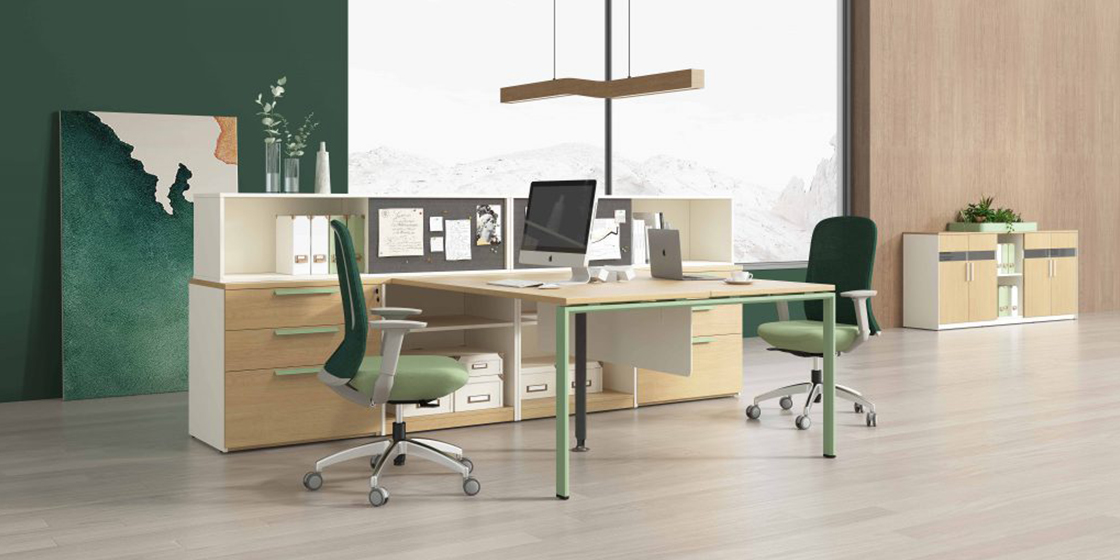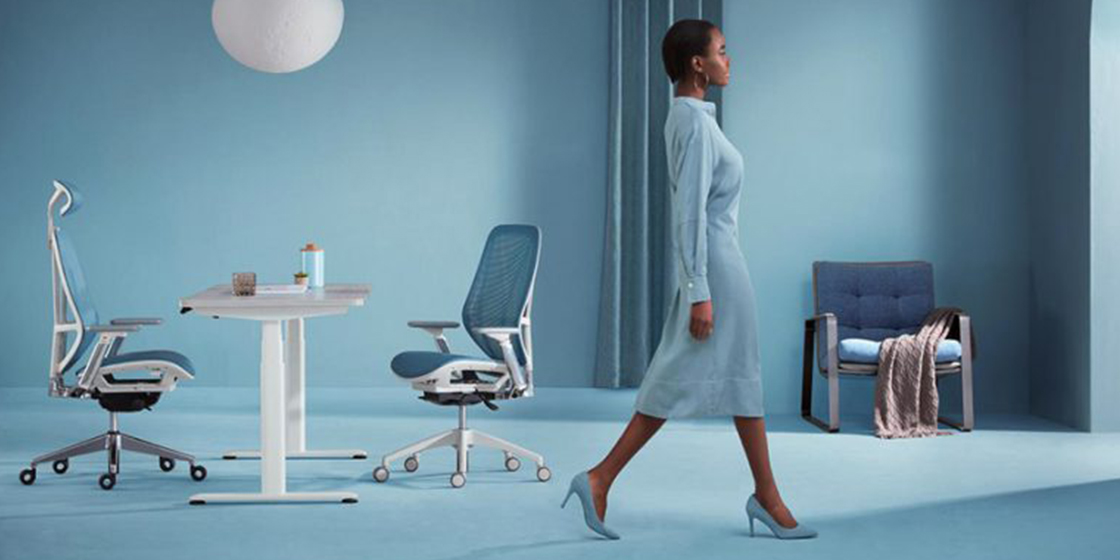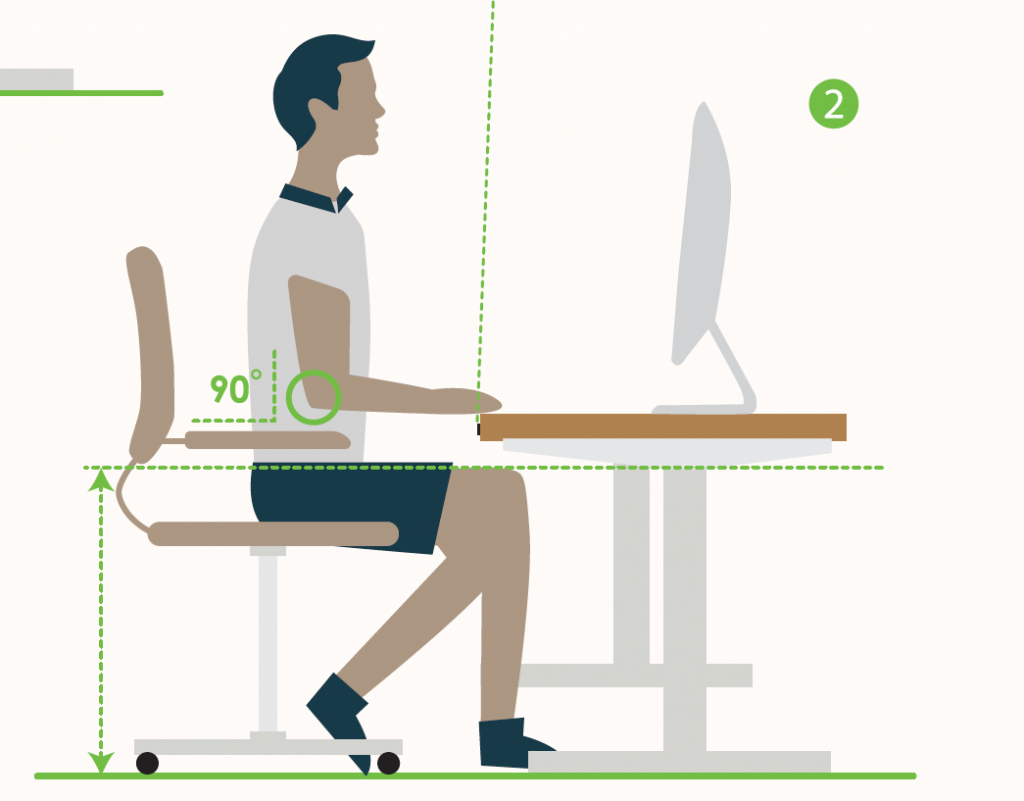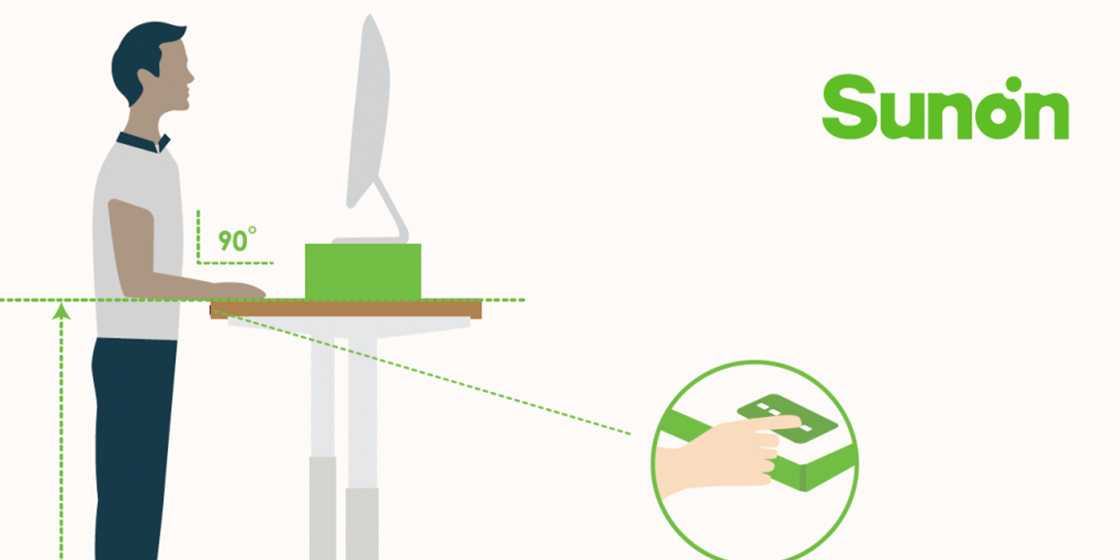
Are you sitting at your desk now? Don't move a muscle and check your position right now. You are either slouching with your hips at the edge of the chair or you are hunched over being too close to your laptop or phone. You might do these things involuntarily and never think about the consequences, but research shows that our bad posture at our desks can actually have long-term health implications in addition to energy slumps and back pain.
In the last decade, Ergonomics has become the buzzword in workplace design and businesses are paying attention to the impact poor ergonomics has on productivity, health, and mood of the employees. Ergonomic challenges have caused the rate of musculoskeletal disorders (MSDs) to increase dramatically in the recent past. However, no matter how well a company designs a workspace, it is also a responsibility of each employee to make sure they are using good ergonomics at their own workstation.

Luckily there are few adjustments you can make right now that will make your desk-life a whole lot safer. Here are 9 tips for employers and employees, to foster a healthy, productive, and ergonomic working environment:
1. Keep Moving
Don't maintain the same posture or position for extended periods of time. Stand up, walk around, or do some light stretches for a few minutes every hour or so. If you feel, you are slouching, stop yourself and get back to a straight spine position. Consider alternating part of the day working while sitting, and part of the day working while standing.
2. Choose Ergonomic adjustable chairs
Choose an ergonomic chair with lumbar support that supports your spinal curves and fits your back. The more positions a chair can adjust to, the more they can be tailored to the individual using them. When it comes to ergonomics, one size most definitely does not fit all.
Take a look at H'UP Ergonomic chair, the winner of the GOOD DESIGN award 2019.

3. Maintain a good posture
Whether you are working from home or in the corporate office, the number one ergonomic priority is establishing a good working posture at the workstation. Always sit in a neutral posture as it's the spine's natural alignment posture. Try not to hunch, slouch, or slump and instead sit completely straight from head to toe with your feet resting on the floor and the knees/elbows bent at 90 degrees.
4. Prevent eye strain
Close your eyes periodically to help avoid eye strain. A popular tip is the 20-20-20 rule. It suggests that every 20 minutes, you take a 20-second break from looking at your monitor. You might also consider reducing the brightness of your monitor and computer color schemes.

5. The Right Position of the monitor
Your computer monitor should be positioned directly in front of you, with the center of the screen at eye level. When you are working in front of the monitor, your neck and shoulders should be in a relaxed and neutral position. This keeps you from frequently tilting your head and neck, which prevents headaches and neck problems. It also helps to avoid eyestrain.
6. Try sit-stand desk or a standing table
Sit-stand desks are an important element in creating an ergonomically-friendly workplace. Standing burns more calories and also recommended and potentially ergonomically sound, assuming employees stand straight and their arms and wrists remain in the neutral position. Data shows strong evidence that intermittent standing increases productivity through a reduction in work break time. The desktop height can be adjusted by a touch of a button according to the height of the user and desired comfort level.
If you don't have a sit-stand table then you can also use a standing table for intermediate periods of time. If you are standing for a long time, then you might feel tired, so keep a stool or high chair nearby. Add some fun to your workspace, with our height-adjustable stool, Chessy (Winner Good Design 2019), and you are good to go.
Check out UP1, the smart height adjustable desk by Sunon.

7. Keyboard and mouse position
Keyboards and mice should be placed where they can be accessed without breaking any of the neutral positioning rules. Place your mouse within easy reach and on the same surface as your keyboard. While typing or using your mouse, keep your wrists straight, your upper arms close to your body, and your hands at or slightly below the level of your elbows.
8. Take short breaks
Prolonged sitting, even with ergonomics and a good posture, can still stress your body. On average, the body can withstand being in one position for about 20 minutes before it needs to be readjusted. Take two or three 30- to 60-second breaks each hour to allow your body to recover from periods of repetitive stress. It can help reduce fatigue, minimize work-related MSDs, create a healthier workplace, and increase productivity.

Chessy Stool
9. Reducing repetitive movements
Most musculoskeletal disorders (MSDs) are caused by repetitive motion. Repeating the same motion over and over is going to cause stress and eventually lead to injury. The best way to combat this problem is by changing tasks. When changing the task is not possible, individuals should periodically change the neutral positioning they are using.
More and more research is being published on ergonomics and workplace wellness. This can help you determine how your workplace can continually incorporate ergonomics into your wellness program to ensure an injury-free work environment and increased productivity.
For expert help on ergonomic furniture for offices, get in touch with us.